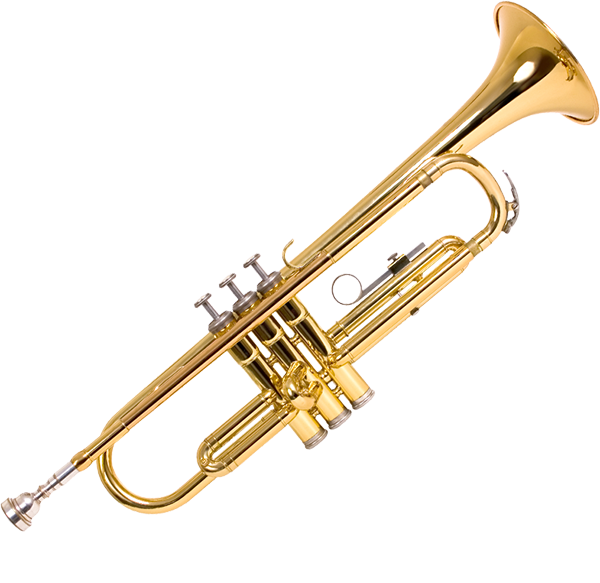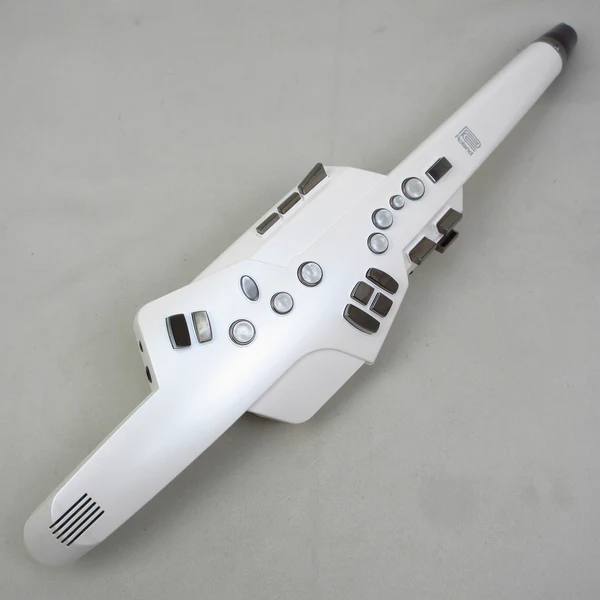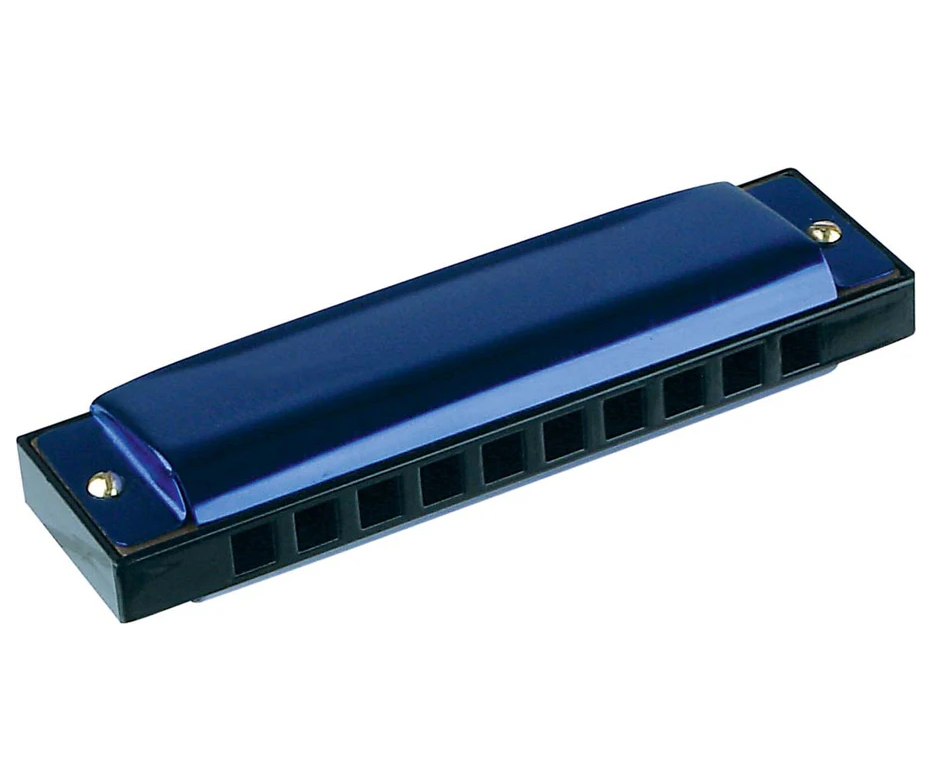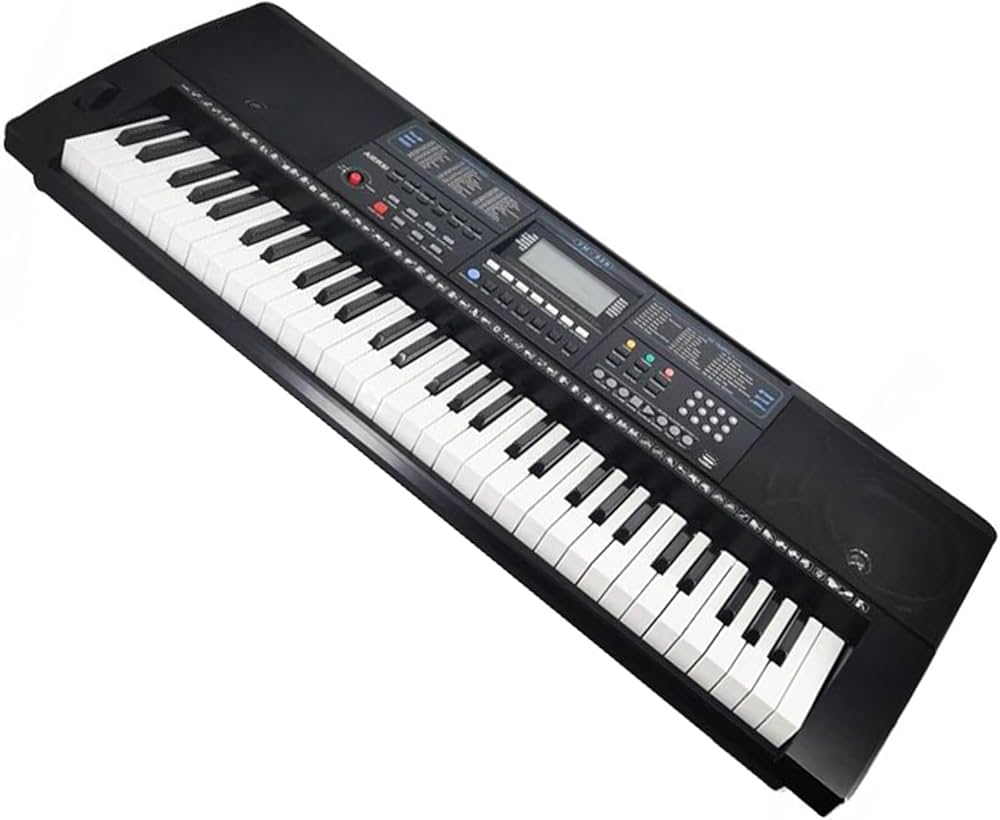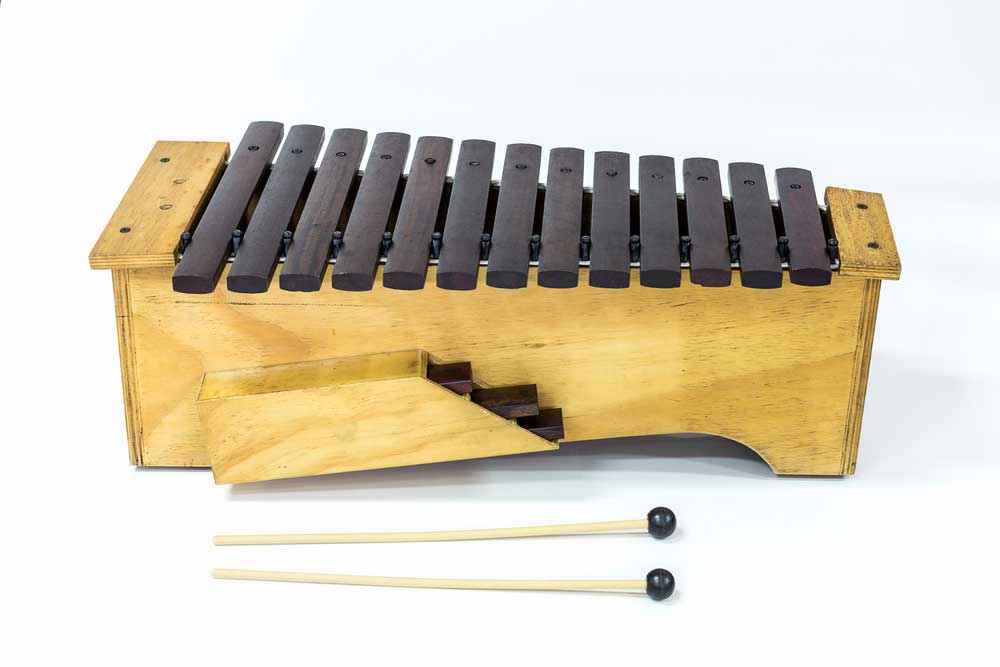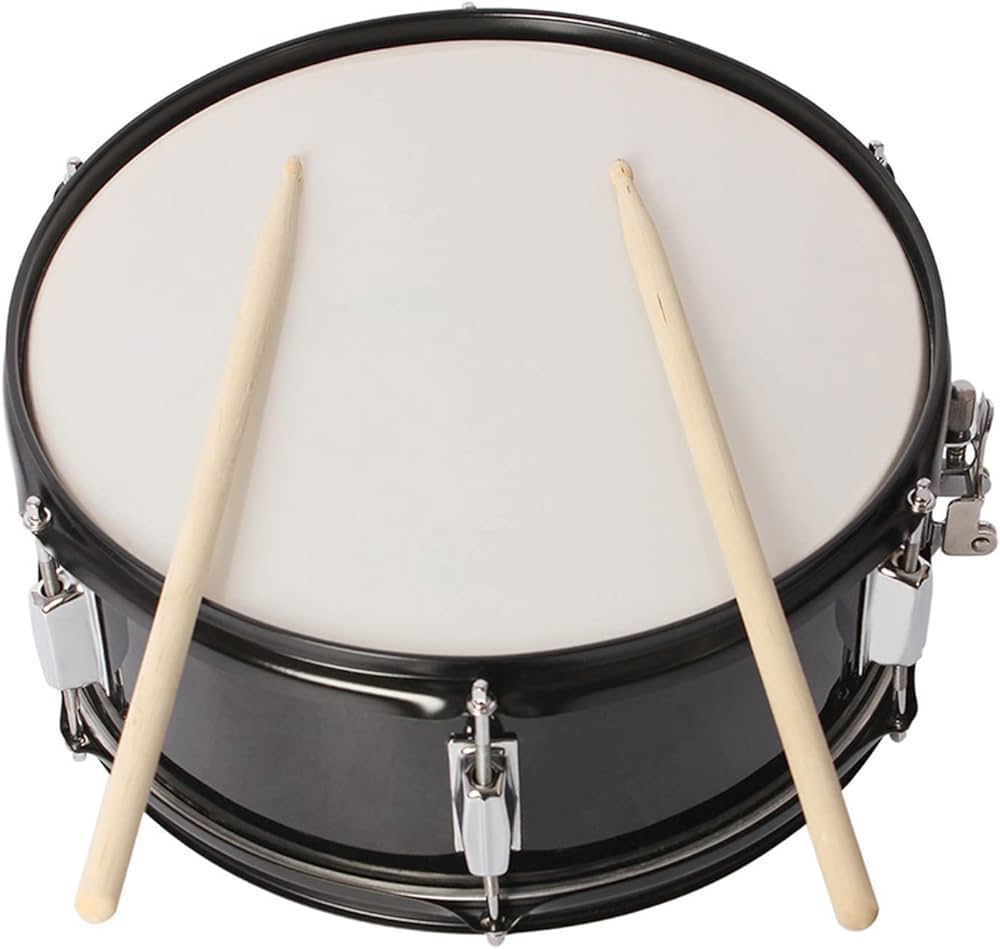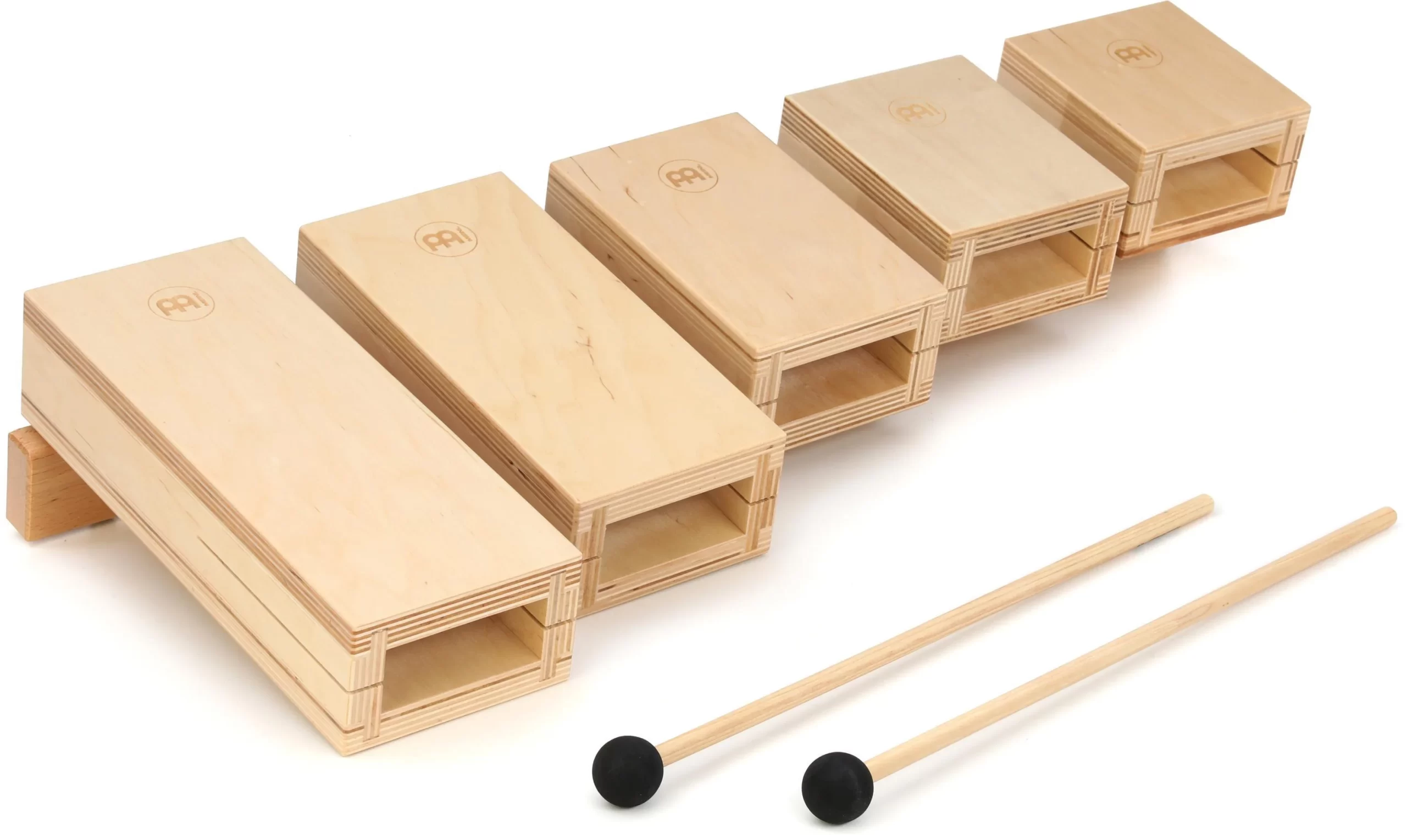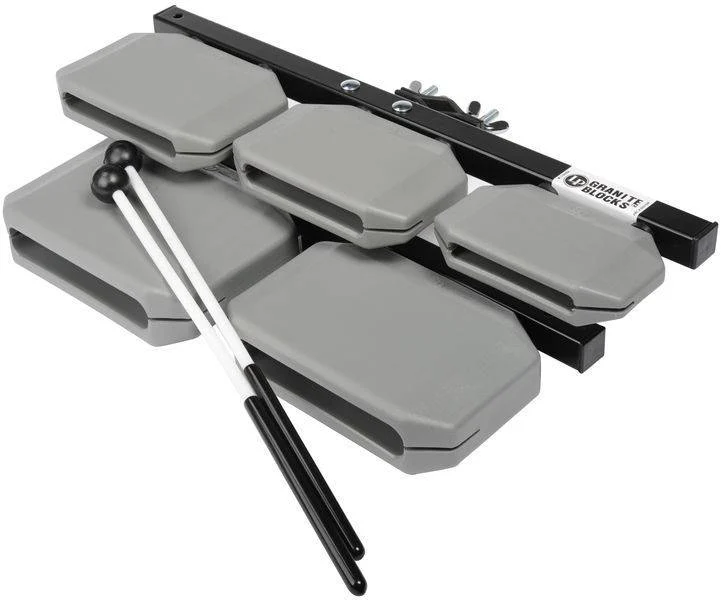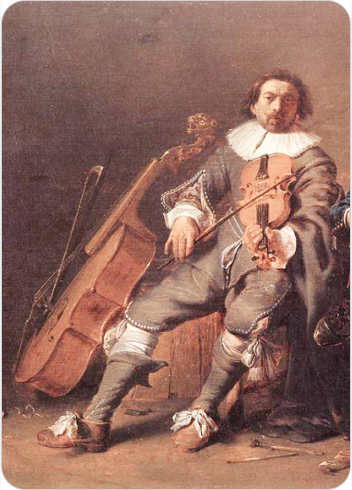Temple Blocks
Percussions
Asia
Between 0 and 1000 AD
Video
Temple blocks are percussion instruments that belong to the idiophone family, meaning they produce sound primarily through the vibration of the instrument itself, without the use of strings or membranes. These wooden blocks are hollowed-out and have a slit to enhance their resonance. When struck with a mallet, they produce a distinct, woody, and resonant sound. The sound can vary depending on the size of the block, the type of wood used, and the mallet’s material. Typically, temple blocks are arranged in a set of five, each tuned to a different pitch, allowing for a range of sounds in musical compositions.
Temple blocks have variations across different cultures. In Western music, they are often mounted on a rack and played as a set, while in Asian traditions, they may be used individually in religious and ceremonial contexts. They are commonly made of hardwood, such as rosewood or maple, which enhances their durability and tonal quality. The modern versions may also include synthetic materials for added resilience.
History and Origin
Temple blocks trace their origins to Asia, specifically East Asia, where they have been a part of musical and religious traditions for centuries. While their exact origins are difficult to pinpoint, they have been widely used in China, Japan, and Korea, where they serve both musical and ceremonial purposes. The instrument’s name in the Western world reflects its historical association with temple rituals and sacred spaces in Asian cultures.
The earliest records of temple blocks date back to ancient China, potentially as early as the Tang Dynasty (7th–10th century). However, similar slit drums and wooden idiophones existed even before this period in various cultures. In Japan, the temple block is closely related to the Mokugyo, a wooden fish-shaped drum used in Buddhist chanting and meditation, which has been in use for over a thousand years. Over time, temple blocks evolved from simple wooden sound-producing tools into structured musical instruments found in orchestras and contemporary ensembles.
Types and Features
Temple blocks come in different forms depending on cultural and musical needs. The most commonly recognized types include traditional Asian temple blocks and modern Western adaptations. Traditional Asian versions, such as the Mokugyo, are often intricately carved and feature symbolic engravings. They produce a deep and resonant sound that complements vocal chanting in religious ceremonies. In contrast, Western temple blocks are often standardized into sets of five and mounted on a rack, making them more suitable for orchestral and contemporary music settings.
The primary features of temple blocks include their size, shape, and tuning. Smaller temple blocks produce higher-pitched tones, while larger ones create deeper sounds. The slit on the top enhances the resonance, and the type of wood used affects the tonal richness. Some temple blocks are crafted with added reinforcements to prolong their durability, particularly for performance settings where frequent use is expected. In orchestras and percussion ensembles, temple blocks are typically played using rubber-headed or wooden mallets to achieve a variety of tonal effects.
Work Mechanics
Temple blocks produce sound through direct impact. When struck with a mallet, the vibrations travel through the hollow wooden structure, creating a distinctive percussive tone. The slit in the block helps in producing a resonant and clear sound, preventing the vibrations from being overly dampened. The depth and clarity of the sound depend on the block’s dimensions, material, and craftsmanship.
Percussionists often play temple blocks in rapid succession to create rhythmic patterns. The different pitches of the blocks allow for melodic interplay, making them versatile for both rhythmic and tonal applications. In religious settings, temple blocks are struck in specific patterns to accompany chants, while in orchestral music, they add percussive color and dynamic accents to compositions.
Role in Music
Temple blocks hold an important place in both traditional and contemporary music. In Buddhist and Taoist rituals, they are used to keep rhythm during chants and prayers, ensuring a meditative and harmonious flow. In Chinese opera and traditional Korean music, they provide rhythmic foundations and enhance dramatic expressions in performances.
In Western music, temple blocks became popular in the 20th century, finding their way into orchestral, jazz, and contemporary compositions. Composers often use them to add unique percussive timbres, especially in film scores and theatrical productions. They are also used in marching bands, where their bright and cutting sound helps maintain rhythmic clarity in outdoor settings.
Significance of Temple Blocks
The significance of temple blocks extends beyond their musical applications. They carry deep cultural and spiritual meaning, particularly in Asian traditions. In Buddhist temples, the Mokugyo serves as a symbol of alertness and spiritual discipline, reminding practitioners to remain mindful in their chanting. The steady beat of the temple block represents the continuity of existence and the cyclic nature of life in Buddhist philosophy.
From a musical perspective, temple blocks contribute to the richness of percussion ensembles by adding a distinct tonal quality. Their ability to produce both sharp, rhythmic articulations and warm, resonant tones makes them an asset in diverse musical genres. Whether in traditional ceremonies or contemporary performances, temple blocks continue to bridge cultural traditions with modern musical expression, preserving their historical essence while evolving in new artistic contexts.
FAQ
What are the characteristic sounds produced by temple blocks?
Temple blocks produce distinct, resonant tones due to their hollow construction. Each block creates a unique pitch when struck, allowing for a variety of musical patterns. The sound is enhanced by the block's internal space acting as a resonating chamber.
What is the origin of temple blocks?
Temple blocks originate from East Asian traditions, particularly in China and Korea. They were used in ancient rituals and ceremonies, known as "muyu" in China. Over time, they have been adopted into various musical genres worldwide.
How are temple blocks used in music?
Temple blocks are used in both traditional and modern music to add a unique sound. They are featured in orchestras, folk music, and popular genres like jazz and rock. Their distinct tones contribute to the rhythmic and cultural diversity of musical performances.
 Links
Links
References
Other Instrument
Categories

